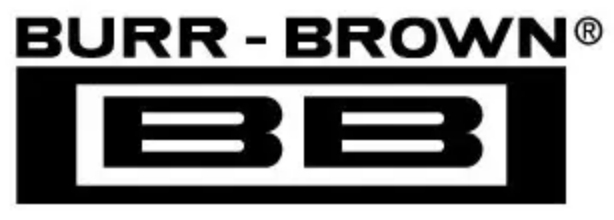THEORY OF OPERATION
The ADS8321 is a classic Successive Approximation Reg-
ister (SAR) analog-to-digital (A/D) converter. The architec-
ture is based on capacitive redistribution which inherently
includes a sample/hold function. The converter is fabricated
on a 0.6µ CMOS process. The architecture and process
allow the ADS8321 to acquire and convert an analog signal
at up to 100,000 conversions per second while consuming
less than 5.5mW from +V
CC
.
The ADS8321 requires an external reference, an external
clock, and a single power source (V
CC
). The external refer-
ence can be any voltage between 500mV and 2.5V. The value
of the reference voltage directly sets the range of the analog
input. The reference input current depends on the conversion
rate of the ADS8321.
The external clock can vary between 24kHz (1kHz through-
put) and 2.4MHz (100kHz throughput). The duty cycle of
the clock is essentially unimportant as long as the minimum
high and low times are at least 200ns (4.75V or greater). The
minimum clock frequency is set by the leakage on the
capacitors internal to the ADS8321.
The analog input is provided to two input pins: +In and –In.
When a conversion is initiated, the differential input on these
pins is sampled on the internal capacitor array. While a
conversion is in progress, both inputs are disconnected from
any internal function.
The digital result of the conversion is clocked out by the
DCLOCK input and is provided serially, most significant bit
first, on the D
OUT
pin. The digital data that is provided on the
D
OUT
pin is for the conversion currently in progress—there
is no pipeline delay. It is possible to continue to clock the
ADS8321 after the conversion is complete and to obtain the
serial data least significant bit first. See the digital timing
section for more information.
2 • V
REF
peak-to-peak
Common
Voltage
Single-Ended Input
ADS8321
V
REF
peak-to-peak
Common
Voltage
ADS821
V
REF
peak-to-peak
Differential Input
FIGURE 1. Methods of Driving the ADS8321—Single-Ended
or Differential.
5
V
CC
= 5V
4.0
4
Common Voltage Range (V)
3
Single-Ended Input
2.8
2.2
2
1
0
–0.3
–1
0.0
0.5
1.0
V
REF
(V)
1.5
2.0
2.5
ANALOG INPUT
The analog input is bipolar and fully differential. There are
two general methods of driving the analog input of the
ADS8321: single-ended or differential (see Figure 1). When
the input is single-ended, the –In input is held at a fixed
voltage. The +In input swings around the same voltage and
the peak-to-peak amplitude is 2 • V
REF
. The value of V
REF
determines the range over which the common voltage may
vary (see Figure 2).
When the input is differential, the amplitude of the input is
the difference between the +In and –In input, or; +In – (–In).
A voltage or signal is common to both of these inputs. The
peak-to-peak amplitude of each input is V
REF
about this
common voltage. However, since the input are 180°C out-
of-phase, the peak-to-peak amplitude of the difference volt-
age is 2 • V
REF
. The value of V
REF
also determines the range
of the voltage that may be common to both inputs (see
Figure 3).
In each case, care should be taken to ensure that the output
impedance of the sources driving the +In and –In inputs are
matched. If this is not observed, the two inputs could have
7
FIGURE 2. Single-Ended Input—Common Voltage Range
vs V
REF
.
5
4.0
4
V
CC
= 5V
Common Voltage Range (V)
3
Differential Input
2.75
2
1
1.95
0
–0.3
–1
0.0
0.5
1.0
V
REF
(V)
1.5
2.0
2.5
FIGURE 3. Differential Input—Common Voltage Range vs
V
REF.
®
ADS8321

 BURR-BROWN [ BURR-BROWN CORPORATION ]
BURR-BROWN [ BURR-BROWN CORPORATION ]